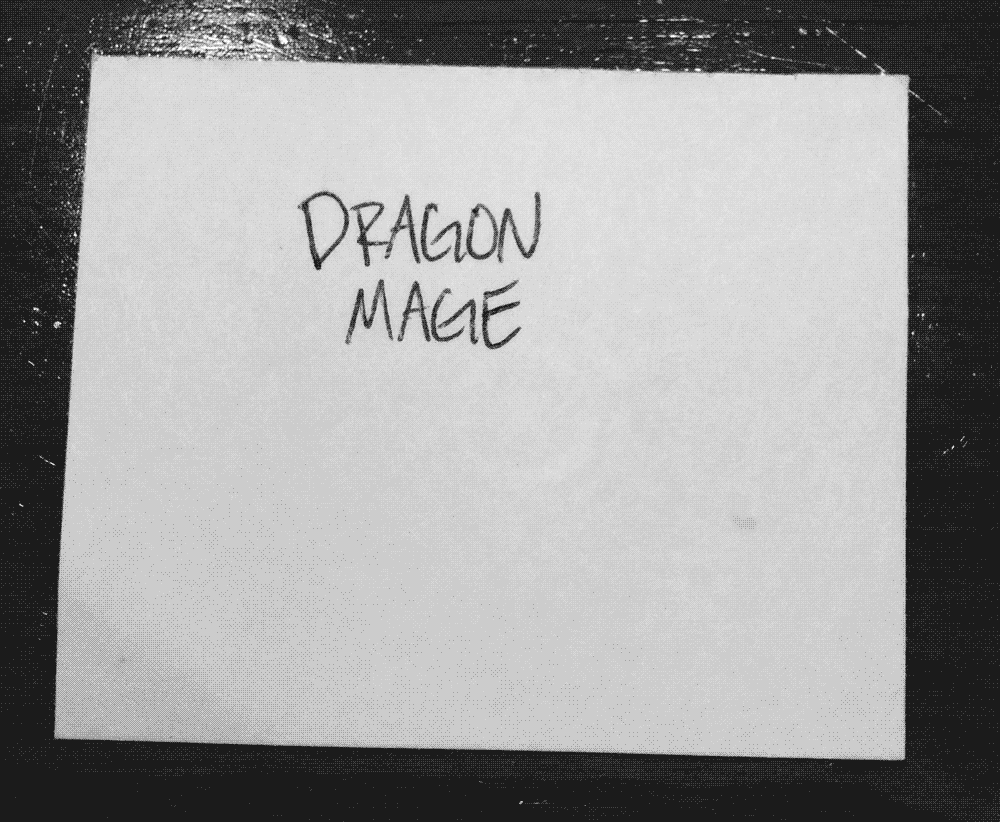When a recent beach vacation trip got rained out, we had to pass the time with board games. We stumbled upon a variant of Pictionary called Ultimate Pictionary, which we tweaked to create “Stupid Wizard”. The game is a kind of visual telephone.
All you need to play Stupid Wizard is a group of at least three people, paper with both sides blank, and pens. Specifically, I recommend cutting blank 3x5" index cards in half (creating a 3x2.5" card) and using pens instead of pencils, so marks are permanent.
Place the blank cards in the center of the table, and make sure everyone has a pen. For the first round, everyone takes a blank card and writes a phrase on it. Take some time on this first idea, since it’s going to inspire the rest of the game. The phrase should be at least somewhat drawable.
After everyone has written, each player passes their card to the player on the right. Players read the new card that was passed, and then flip the card over to draw what is written.
After all players have finished, everyone again passes the card to their right with the drawing face-up. At this stage, there is one card with both sides filled (one side is the phrase, the other is the drawing). The player receiving the card should not look at the reverse side to see the original words. Each player now takes a new blank card from the center of the table, and on it writes what she thinks the drawing is a depiction of. Players now stack the cards up, such that the only thing visible is the written interpretation of the drawing underneath the top card.
Again, all players pass the stack of cards to their right. The receiving player reads the written phrase and then flips the card over – avoiding glancing at the drawing on the lower card – to draw the phrase that is written on the reverse of the card.
Once all players have finished drawing, everyone again passes the stack of cards to the right (this time the stack of two cards is topped by the most recent drawing being face-up). Since both cards on the stack have had both sides used, players take a new blank card and then write a phrase interpreting the drawing. When done, players again stack the new card on top, with the writing facing up, and pass the stack of cards to their neighbor. Once again, the receiving player reads the phrase, flips the card over, and draws the written phrase.
Repeat this process until there are four cards in the stack, with each card having one drawing and one phrase. Now the game has ended and it’s time to reveal the story progression. One player at a time flips the entire stack of cards over and reads what is written on the bottom most card, which is the phrase that was initially written in round one. Then she flips the card over and shows the group of players what was drawn in response. Then she reads what was on the second-bottom-most card, the interpretation of that first drawing, and again flips it over to reveal the drawing of that interpretation. She does this for the remaining two cards, or until she’s laughing so hard she can’t breathe.
The basic way to play the game is to merely pass to the neighbor on the players’ right (or left). However if you play multiple rounds of the game, then the player on the left is always “upstream” of the player on the right. To change who is receiving whose cards, consider passing to every-other player, skipping the immediate neighbor. This variant also has the advantage of making it more difficult to trace the stack’s lineage during gameplay.
Another variant uses a different number, other than four, of completed cards before ending the game. We found that the game works best if it ends immediately prior to you receiving the stack containing your original idea. You can alter the number of cards to effect that outcome, since each card is completed with two passes.
